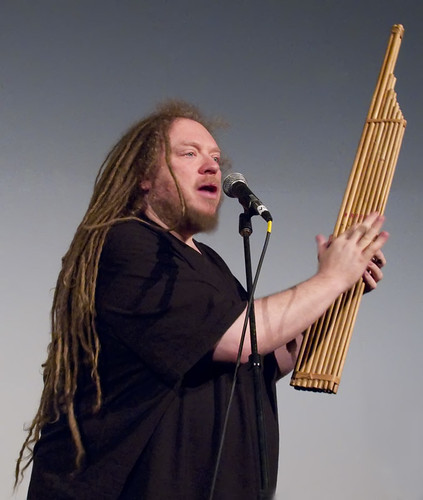This week, under the heading of “Introduction to Online Education Theory”, POTCert addresses not only a contemporary and challenging topic but one which has fundamental implications for future society. Consequently, because of the colossal scope and contentious nature of the topic, and in order to avoid posting something that although tries to encompass as much as possible only serves to be vague and unfathomable, I’m just going to provide a few highlights of a couple of articles that focussed my reading and comment on one or two of the prominent points.

First off, in his article, Individual Knowledge in the Internet Age, Larry Sanger is scornful of some of the sentiment currently circulating in education, saying:
some Internet boosters argue that Google searching serves as a replacement for our memory and that students need not memorize — need not learn — as much as they did before the Internet
educationists inspire us with the suggestion that collaborative learning online can serve as “the core model of pedagogy.” Knowledge is primarily to be developed and delivered by students working in online groups
and further, he says that these “Internet boosters” advocate that
the co-creation of knowledge can and should take the place of reading long, dense, and complex books.
Sanger fears that
if we take their advice […] we will have a society of drones, enculturated by hive minds, who are able to work together online but who are largely innocent of the texts and habits of study that encourage deep and independent thought.
He doesn’t see how using the tools of the Internet are any real substitute for
the difficult work of developing individual minds.
His key underlying assumption is that
a liberal education and the Western enlightenment ideals that it inculcates not only are valuable but are essential to our future.
Here, I’d counter that deep independent thought is all well and good, but hasn’t this led to a situation today where information and expertise has become siloed; and besides, drawing now on my recent experience in the eLearning and Digital Culutres MOOC, what’s to say that such humanist values and enlightenment ideals actually beget some pinnacle of human achievement, because as things stand currently in the world, there’s a whole lot that could be working out much better: the environment, equality, social justice and the eradication of poverty to name but a few. It may well be, as transhumanist thinking avers, that by realising the benefits of emerging technologies we could indeed overcome fundamental human limitations. Maybe, the knowledge that’s needed now, to meet the complex challenges of the 21st century and beyond, can no longer be derived from deep independent thought and must indeed be summoned up as collective intelligence, or at the very least facilitated through networked learning.
“Connection forming is natural”, says George Siemens in his article, Networks, Ecologies, and Curatorial Teaching.
It doesn’t need coercion. We do it with language, images, video. We create, express, connect. And software is now available that aids this innate activity with unprecedented fervor. We build competence, make sense, learn, and growth through our connections.
Siemens asks us to consider what he calls the ” happy little edublogger”, whose
established networks [and] experience enables them to put new developments into a historical context. They assist others to create networks…but they do more. They serve as curators of ideas, connections, philosophies, and world views. They create frameworks of interpreting and understanding history, new technologies, and trends through their work and public dialogue.
In the relation to the role of the “individual formerly known as teacher”, Siemens comments that he’s
rather sick of “sage on stage” and “guide on the side” comparisons. The clear dichotomy chafes.
He acknowledges that
power in classrooms has shifted from the teacher at the centre
preferring to use the term
‘network administrator’ […] It’s the basis on which teaching and education should be founded. But I think something more is needed, something that places some level of value or interpretation on content, knowledge, and concepts being explored.
Here he offers the idea of
the joint model of network administrator and curator form the foundation of what education should be.
Explaining the addition of curator as
an expert [who] exists in the artefacts displayed, resources reviewed in class, concepts being discussed. But [who’s] behind the scenes providing interpretation, direction, provocation, and yes, even guiding. A curatorial teacher acknowledges the autonomy of learners, yet understands the frustration of exploring unknown territories without a map. A curator is an expert learner. Instead of dispensing knowledge, he creates spaces in which knowledge can be created, explored, and connected. While curators understand their field very well, they don’t adhere to traditional in-class teacher-centric power structures.
Certainly, as Siemens points out
much [is] happening in terms of defining what is acceptable authority for information and knowledge.
Undoubtedly, because education’s no longer asking the same questions and can no longer be based on once familiar assumptions.
Image Source: http://www.fotopedia.com/items/flickr-3842815564
References:
Sanger,L. (2010) Individual Knowledge in the Internet Age. Available at: http://www.educause.edu/ero/article/individual-knowledge-internet-age
Siemens, G. (2007) Networks, Ecologies, and Curatorial Teaching. Available at: http://www.connectivism.ca/?p=93

This work is licensed under a Creative Commons Attribution-NonCommercial-ShareAlike 3.0 Unported License.





